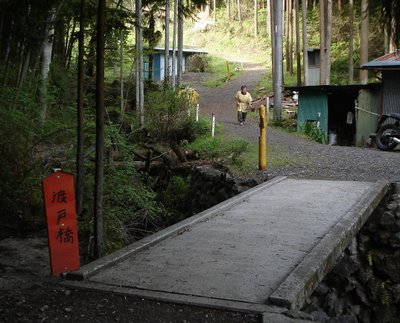Good friend Paul Wiseman travels to Aichi Precture and finds the labor squeeze happening faster than we could have imagined even two years ago...
Wave of retiring workers could force big changesLast week, I watched the chief female clerk of my local wholesale food outlet teach a timid, fiftyish man how operate the cash register. She did it by putting him behind the counter and letting him serve the midnight customers.
USA Today
By Paul Wiseman
TOYOHASHI, Japan — No one knows spindles like Katsuya Hyodo.
For more than three decades, the diminutive factory worker, armed with only a junior high school education, has studied and designed the whirring cylinders at the heart of automotive machine tools. "I like spindles," Hyodo says. "There are so many different kinds."
His expertise and passion are priceless to a small company like his employer, machine tool manufacturer Nishijimax (annual revenue: $30 million). Just one problem: Katsuya is 72 years old. That's why he spends Sunday afternoons at home transcribing everything he knows about spindles into his computer. He wants to make sure his wisdom reaches the next generation. "I am not just doing it for myself," he says.
All over Japan, companies are bracing for a demographic wave that will wash away many of their most experienced employees. The Japanese call it their "2007 problem." Beginning next year, members of what Japan considers its baby boom generation will start hitting 60 and dropping out of the workforce. Some might postpone retirement, but they can't work forever. Plunging birth rates mean there won't be nearly enough young people to replace them.
"We face a big problem," says Shigeyoshi Yoshida, executive director of the Japan Aging Research Center. "Over the next three or four years, 10 million people will retire."
Japan is starting to lose workers just when it needs them most. After more than a decade of stagnation, the Japanese economy is growing again. The unemployment rate was at an eight-year low of 4.1% in March. Employers began complaining about a labor shortage early last year, the Bank of Japan says, and it's bound to get worse. Japan's population fell in 2005 for the first time, to 126.1 million, and is expected to shrink by nearly 38 million by 2050.
Japanese companies have already shipped more than 40% of their production capacity overseas, according to Jesper Koll of Merrill Lynch; but they can't outsource everything. The labor squeeze is forcing Japan to consider social changes that once were unthinkable:
• Pushing the official retirement age from 60 to 65.
• Encouraging more women to work.
• Admitting more foreign workers — controversial in a country with a deep distrust of outsiders.
Now, I am patient and forgiving...but when it is midnight, I really do want to get home. I kept smiling and making encouraging sounds as the fellow fumbled his way through the various small actions one must do in order to process a sale. Without even a trace of self-conscious mirth, he managed to fail at the performance of every single step of the operation.
Being served at midnight by a total incompetent was...shall we say...exhausting?
Today, the outlet threw in the towel on hiring enough workers to both manage the stock and run the cash registers. Now if you want someone to ring up your purchases, you have to tap on a bell, summoning an aproned worker from the store's aisles.
The local Yoshinoya has also upped its offers in terms of wages. The sign in the window now advertizes 1200 yen an hour for the morning shift; 1250 yen an hour for the graveyard.
Amanoterasu-omikami, retail outlets were paying 850 yen an hour in 2003!
It is difficult to imagine how the retail sector in downtown Tokyo will cope with the accelerating intensification of the labor crunch. Already near my office every other worker in the retail sector has a badge reading Oh, Toh, Cho or Chin (by the way, can someone explain to me, in simple terms, so that I might understand, what visa category covers retail clerks?).
The local McDonald's has even experimented with hiring the mentally handicapped.

One third of the population of the hamlet of Shida makes her way to the Watarido bridge. Hanno-shi, Saitama Prefecture. April 22, 2006. Photo by MTC.

No comments:
Post a Comment